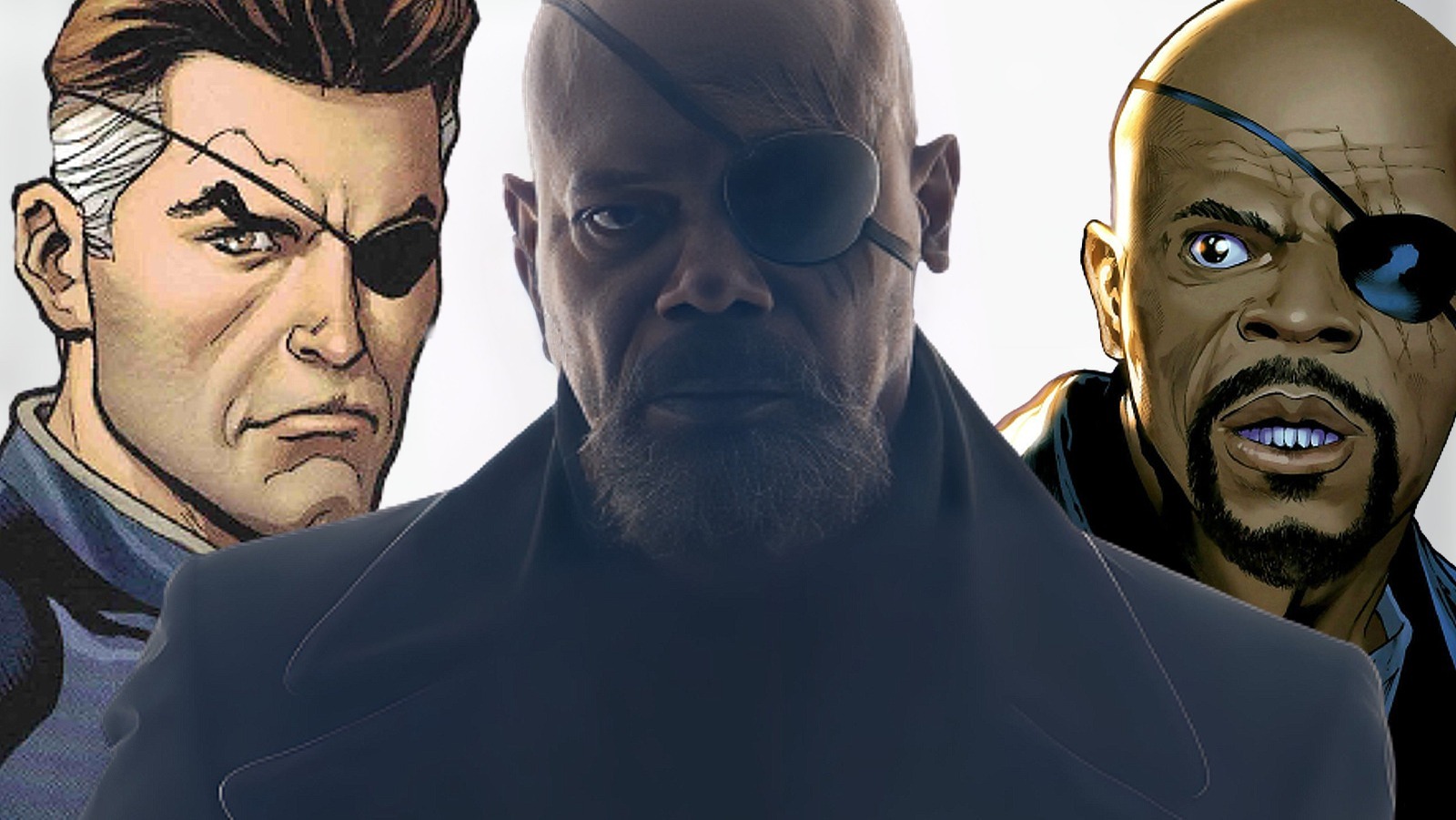
How Marvel’s Nick Fury Lost His Eye In The Comics Compared To The MCU, Explained – Looper
Since his post-credits debut in 2008’s “Iron Man,” Samuel L. Jackson’s Nick Fury has primarily served as the connective tissue that ties the entire Marvel Cinematic Universe together. And as Fury has seen more and more screentime over the years, so has his signature eyepatch. Thanks to “Captain Marvel,” we know that the MCU’s Nick Fury lost the use of his left eye due to an unfortunate Flerken-related mishap, but what happened to him in the comic books? The answer is more complicated than you may think, with the origin story of Fury’s eyepatch evolving over the decades. However, none of them involve alien cats.
In fact, when Fury is first introduced in the pages of “Sgt. Fury and his Howling Commandos” # 1 in 1963, he has two fully functioning eyes. He’s also a Caucasian World War II soldier, a far cry from the version of the character most fans know today. His eyepatch doesn’t appear until 1965’s “Strange Tales” #135, the same issue that introduces S.H.I.E.L.D. to Marvel Comics. But even then, the story of what led to Fury’s missing eye remained a mystery, at least for a while.
At Last!! The origin of Nick Fury’s iconic eye-patch
 Marvel Comics
Marvel Comics
The first origin story of Nick Fury’s ocular injury came the following year, in 1966’s “Sgt. Fury and His Howling Commandos” #27. By this point, the eyepatch had already become so synonymous with the character that the issue proudly boasted on the cover that fans would finally get its backstory. Marvel labeled the book “the tale you ordered us to tell!”
The comic reveals that the original version of Fury sustains the injury while on a mission in Nazi Germany. He saves his troops by deflecting an enemy grenade but sustains a catastrophic injury to his eye in doing so.
In the aftermath, Fury is faced with two choices. He can undergo a procedure to permanently repair his eye, which would put him out of action for a year. Or, he can go for a temporary fix that will get him right back in the fight with his men, but eventually leave him blinded in his left eye. He chooses the latter, tying his characteristic heroic stoicism in with the genesis of his now famous look.
Nick Fury’s Ultimate redesign
 Marvel Comics
Marvel Comics
Nick Fury got a major makeover in 2002 following the launch of the Ultimate Marvel Universe, an imprint that saw many of the publisher’s iconic characters getting dramatically modernized reimaginings. In “The Ultimates” #1, without even consulting with the actor first, writer Mark Millar and artist Bryan Hitch based the rebooted version of Fury on Samuel L. Jackson. And while the character’s design was entirely new, the eyepatch remained, though with its own revamped origin story.
Instead of World War II, Ultimate Nick Fury fought in the Gulf War. While on a mission transporting Weapon X through the desert, his convoy is attacked by enemy forces. He survives the skirmish but badly injures his eye in the chaos. A nearly-dead Fury is rescued by Wolverine, but not unscathed, leaving us with the Nick Fury aesthetic most fans recognize today. Despite this version of Fury being the basis for the MCU incarnation, since Marvel Studios didn’t have access to the X-Men until Disney’s acquisition of 21st Century Fox in 2017, a mutant-free origin story would then have to be invented for his cinematic counterpart.
While its backstory can change from time to time, Nick Fury’s eye injury is a cemented and fundamental aspect of his character. And with countless appearances across comics, movies, TV shows, and more, his eyepatch has by now probably seen enough action to warrant its own solo series.
















































